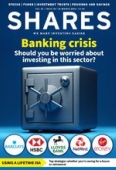Archived article
Please note that tax, investment, pension and ISA rules can change and the information and any views contained in this article may now be inaccurate.
Tracker funds are at the top of retail investors’ ISA shopping list

It’s shaping up to be the ISA season of the tracker fund, if retail investor activity in January and February is anything to go by.
Eight of the 10 most popular funds bought by DIY investors so far this year have been trackers. That’s a complete reversal from last year when active funds ruled the roost, with only one passive fund making it into the top 10.
What’s driving this trend is less clear. It may be that investors are simply keen to get their money to work in the market. Rather than spending time researching active funds, they might be plumping for a passive placeholder, with a plan to revisit their investments when they have a bit more headspace.
The poor recent performance of some hitherto high-flying global growth funds, most notably from the Baillie Gifford stable, may have caused investor confidence in active funds to falter. Nonetheless, Fundsmith Equity (B41YBW7) and Scottish Mortgage (SMT) remain popular, despite also suffering weak performance in the last year or so.
IMPORTANT CHOICES
While trackers are simple by nature, there are some active choices which passive investors need to broach. For example, investors looking to gain passive exposure to international stock markets need to consider how much of their portfolio to invest in each region as performance can vary.
Over the last 10 years the S&P 500 index of US shares has returned 272%, while a FTSE 100 tracker of UK shares has returned 81%. Last year the tables turned, with the S&P 500 returning 3% and the FTSE 100 returning 12%.
Picking a regional allocation for your passive portfolio isn’t entirely straightforward, and there are no hard and fast rules, but there are a few different approaches.
The first is you simply track just one country’s headline index, like the iShares Core FTSE 100 ETF (ISF) in the UK or the iShares Core S&P 500 ETF (CSP1) in the US.
The benefit of this approach is its simplicity, though by investing in just one market you’re missing out on quite a lot of potential opportunities out there in the world. There’s nothing wrong with that per se. After all, you can’t invest in absolutely everything. But it may mean you go through periods of poor performance which more regionally diversified investors avoid.
You also might find yourself with quite high exposure to certain sectors because of the characteristics of the index you’re tracking, for instance a lot of technology in the S&P 500, or a lot of mining and oil and gas exposure in the FTSE 100.
A second approach is to simply invest in a global tracker fund, like Fidelity Index World (BJS8SJ3), which tracks stock price movements across 23 developed markets, weighted according to the size of each company.
Again, this is a simple solution, and it means you get a very broad investment portfolio which largely replicates the performance of the global market as a whole. This makes it quite a good approach for novice investors.
The one drawback would be you can still end up with high exposure to one area. For instance, at the moment, around two thirds of a global tracker fund will be invested in the US, because of the huge size of companies like Apple (AAPL:NASDAQ), Amazon (AMZN:NASDAQ) and Microsoft (MSFT:NASDAQ). That feels like quite a lot of a portfolio to be invested in one market.
Nonetheless this approach is good enough for many active managers, who often broadly follow the geographical exposure of the MSCI World index, which is probably the most well-known global stock market benchmark.
Investing in this way also means the performance of your portfolio won’t differ greatly from that of the opportunity set available in developed international markets.
IS THERE ANOTHER STRATEGY?
A third approach is to apply a more active strategy to regional market allocation, picking areas you think will do well and dropping those you think are duds.
If this approach appeals to you, it might be best to start off with a portfolio of index trackers which you feel achieves diversification across geographies, and adjust this tactically, depending on where you see opportunities and threats.
For instance, you could start off from a neutral position of 20% invested in a tracker fund in each of the US, Europe, the UK, Japan, and emerging markets. You can then dial up and down exposures to these markets depending on your prevailing view. This at least gives you a bit of a baseline from which to actively manage your portfolio.
The emergence of very cheap tracker funds has been a revelation for investors in the last 10 years, especially those who are new to investing, and even for old hands who don’t want the bother of selecting active funds.
Not all tracker funds are created equal, however, and investors do need to be wary of falling foul of some poorly priced funds. For example, the most expensive UK tracker fund is an eye-popping 21 times more expensive than the cheapest, in terms of the annual fund charge. So even though passive investing is generally a simple endeavour, it still pays to have your wits about you.
DISCLAIMER: Daniel Coatsworth who edited this article has a personal investment in Fidelity Index World and Fundsmith Equity
Important information:
These articles are provided by Shares magazine which is published by AJ Bell Media, a part of AJ Bell. Shares is not written by AJ Bell.
Shares is provided for your general information and use and is not a personal recommendation to invest. It is not intended to be relied upon by you in making or not making any investment decisions. The investments referred to in these articles will not be suitable for all investors. If in doubt please seek appropriate independent financial advice.
Investors acting on the information in these articles do so at their own risk and AJ Bell Media and its staff do not accept liability for losses suffered by investors as a result of their investment decisions.
Issue contents
Feature
- Investing in AIM shares for inheritance tax relief? Don’t get caught out by these issues
- Are Harbour Energy and its rivals bluffing about leaving the North Sea behind?
- Why investing in your 60s doesn't mean the end of investing for capital growth
- Lifetime ISA: top investment strategies for your first home or retirement
- How investors can take part in company fundraisings as they dial up again

 magazine
magazine








